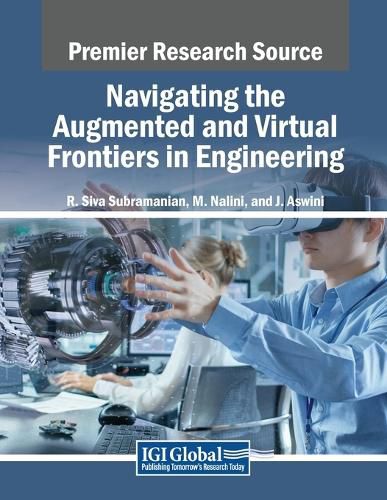Readings Newsletter
Become a Readings Member to make your shopping experience even easier.
Sign in or sign up for free!
You’re not far away from qualifying for FREE standard shipping within Australia
You’ve qualified for FREE standard shipping within Australia
The cart is loading…






This title is printed to order. This book may have been self-published. If so, we cannot guarantee the quality of the content. In the main most books will have gone through the editing process however some may not. We therefore suggest that you be aware of this before ordering this book. If in doubt check either the author or publisher’s details as we are unable to accept any returns unless they are faulty. Please contact us if you have any questions.
In the ever-changing world of engineering, the confluence of Augmented Reality (AR) and Virtual Reality (VR) promises a revolutionary frontier; one that has the potential to remodel the fundamental fabric of our designed world. As our society approaches the genesis of a new age, the need for the study of this bourgeoning technology becomes clear. If harnessed properly, AR and VR have the capacity to revolutionize basic aspects of engineering methods. The combination of AR and VR can tackle the rising difficulties that engineers encounter in their design processes by providing improved tools for visualization and conceptualization. Navigating the Augmented and Virtual Frontiers in Engineering, is a thorough examination of the transformational impact of AR and VR in the vast field of engineering. This book explores the fundamental concepts, practical applications, and significant consequences of incorporating AR and VR technology into numerous engineering disciplines. It provides a comprehensive knowledge of how these immersive technologies are used in design processes, training simulations, maintenance procedures, and collaborative engineering projects. Covering topics such as asset management, geographic analysis, and sustainability, this book is an excellent resource for engineers, researchers, technological developers, postgraduate students, educators, academicians, and more.
$9.00 standard shipping within Australia
FREE standard shipping within Australia for orders over $100.00
Express & International shipping calculated at checkout
This title is printed to order. This book may have been self-published. If so, we cannot guarantee the quality of the content. In the main most books will have gone through the editing process however some may not. We therefore suggest that you be aware of this before ordering this book. If in doubt check either the author or publisher’s details as we are unable to accept any returns unless they are faulty. Please contact us if you have any questions.
In the ever-changing world of engineering, the confluence of Augmented Reality (AR) and Virtual Reality (VR) promises a revolutionary frontier; one that has the potential to remodel the fundamental fabric of our designed world. As our society approaches the genesis of a new age, the need for the study of this bourgeoning technology becomes clear. If harnessed properly, AR and VR have the capacity to revolutionize basic aspects of engineering methods. The combination of AR and VR can tackle the rising difficulties that engineers encounter in their design processes by providing improved tools for visualization and conceptualization. Navigating the Augmented and Virtual Frontiers in Engineering, is a thorough examination of the transformational impact of AR and VR in the vast field of engineering. This book explores the fundamental concepts, practical applications, and significant consequences of incorporating AR and VR technology into numerous engineering disciplines. It provides a comprehensive knowledge of how these immersive technologies are used in design processes, training simulations, maintenance procedures, and collaborative engineering projects. Covering topics such as asset management, geographic analysis, and sustainability, this book is an excellent resource for engineers, researchers, technological developers, postgraduate students, educators, academicians, and more.